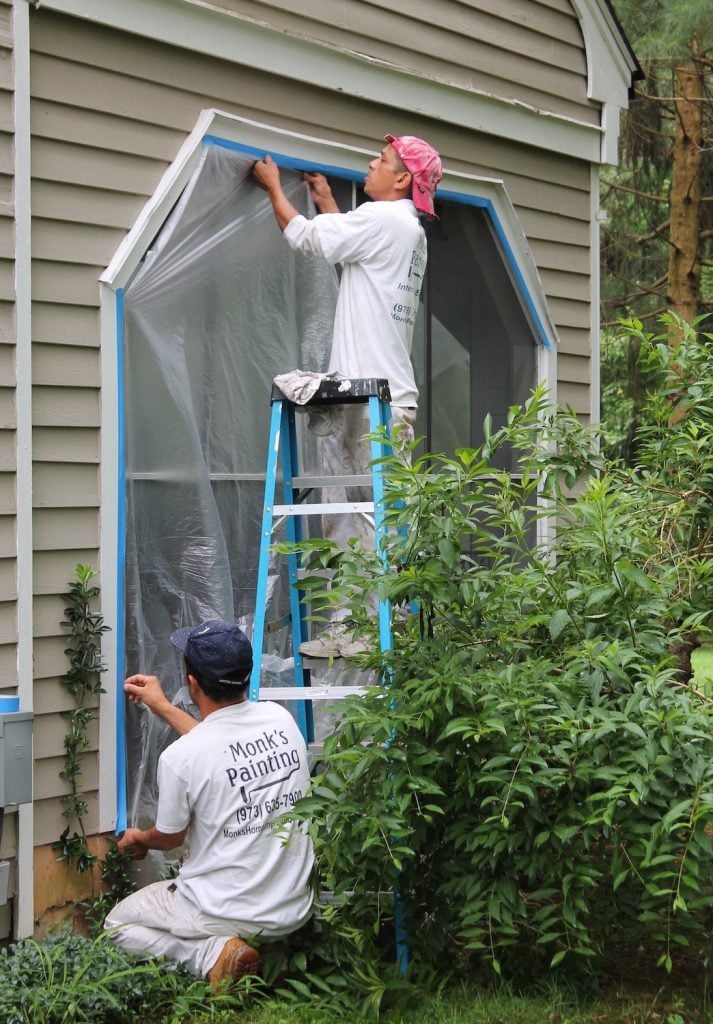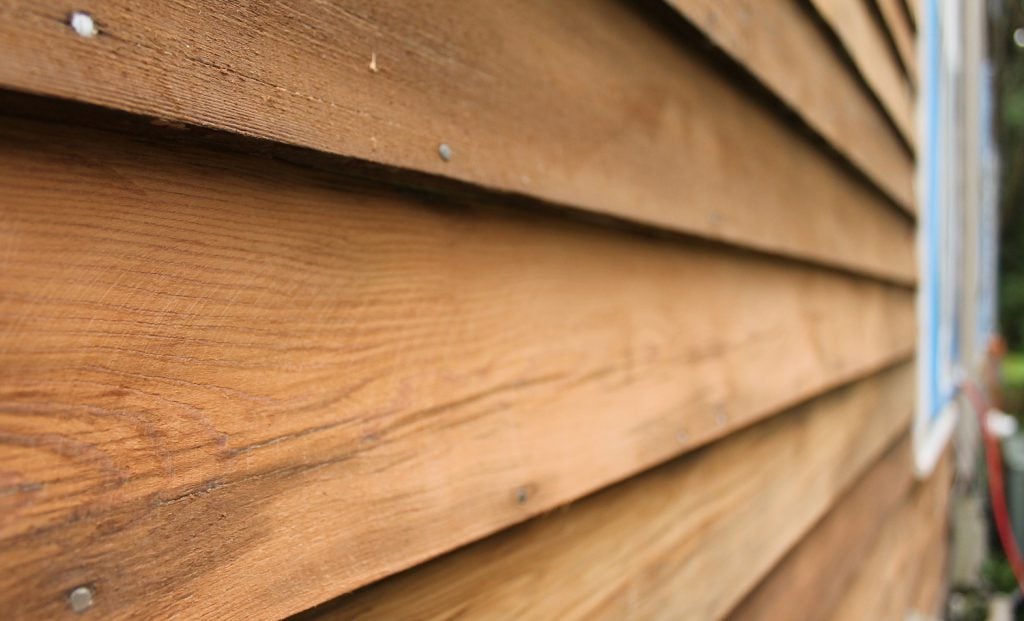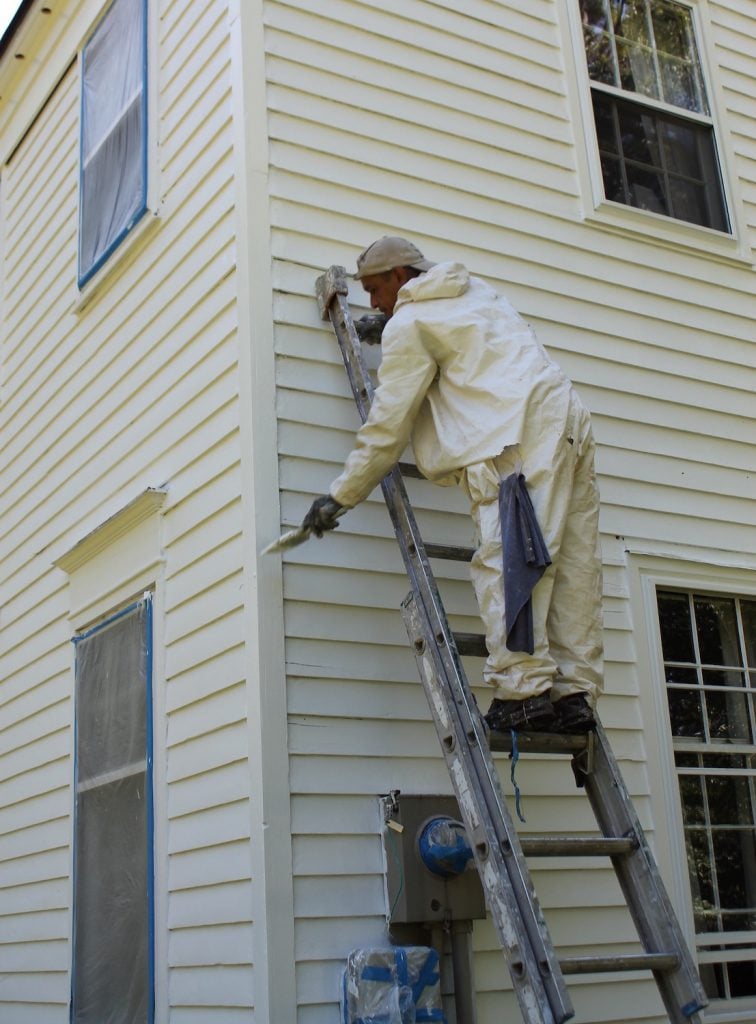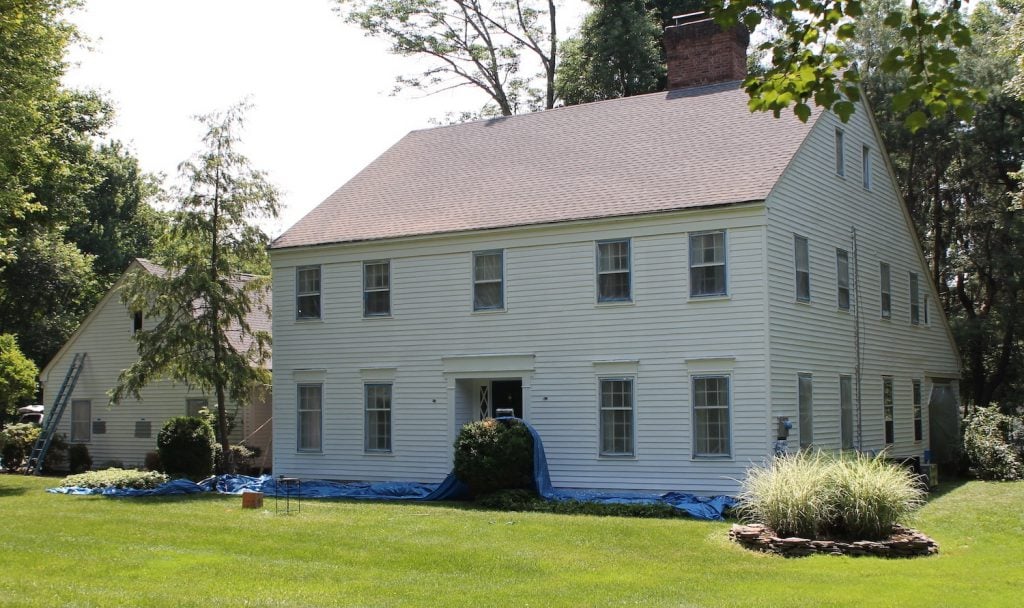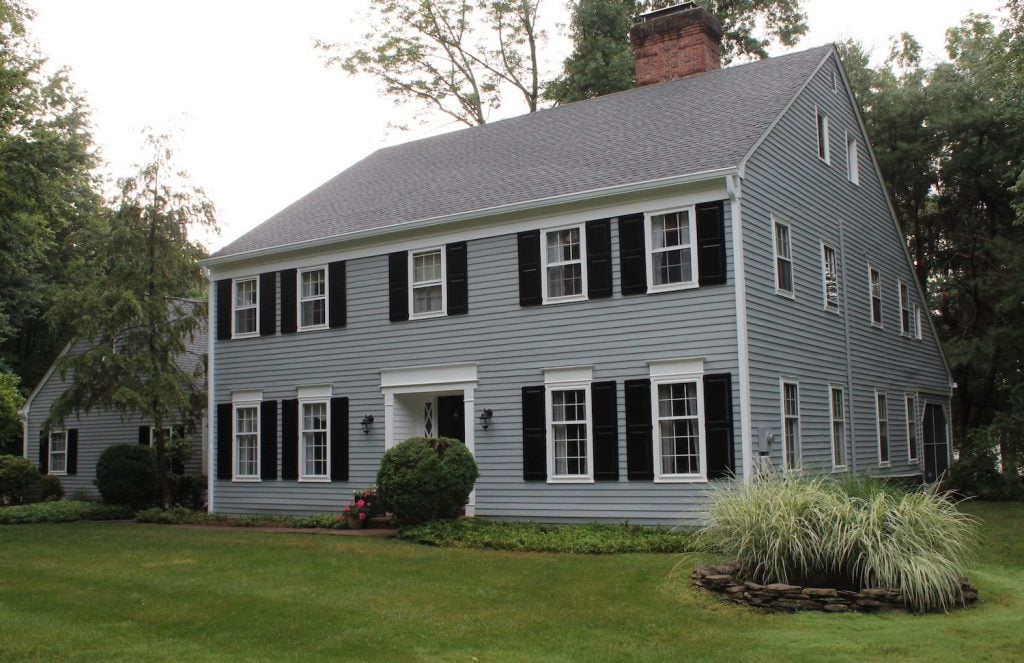Project Info
The most important part of a house painting job is the prep work we do before painting. If the base coat of your exterior paint job has failed and is peeling, fully sanding the exterior is necessary. This means that we will sand your shingles or planks down to the bare wood. It’s the only way to make sure that your paint job will be long-lasting.
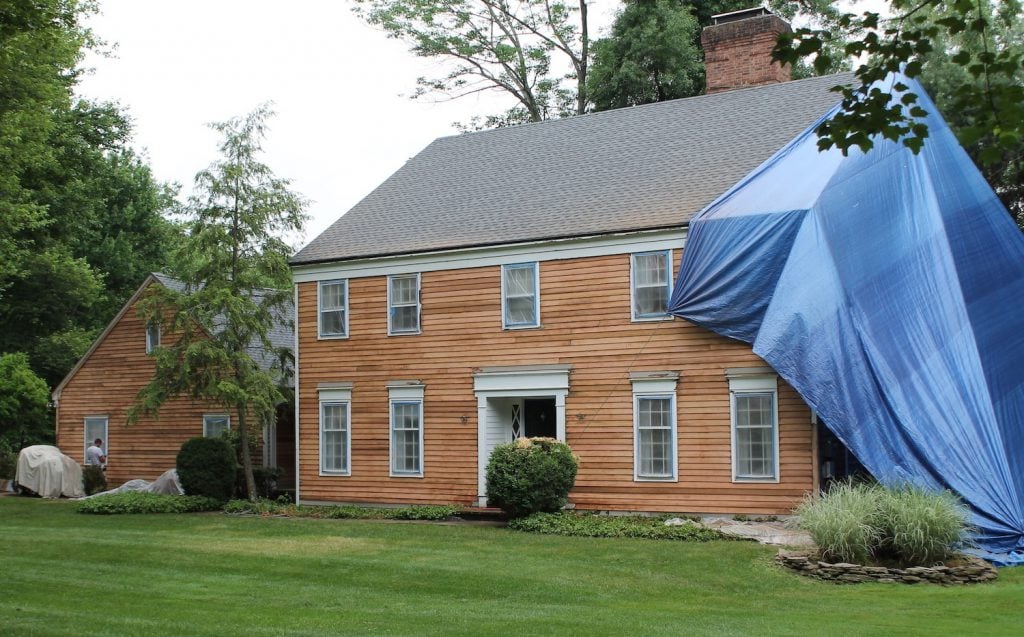
Monk’s Method
When sanding lead-based paint off cedar shake or cedar plank siding, we tape and seal all the windows, doors and vents with plastic. Monk’s painters cover the ground and mark off the area with caution tape. We remove the lead-based paint with HEPA-vac sanders, which contain about 80% of the dust. Lastly, we use blue tarps to help knock down the dust. The blue tarps are actually not required by the EPA Lead Renovation, Repair and Painting Program, but are very helpful in controlling how clean the job site is.
As of 2010, the EPA has new and strict requirements when disturbing lead-based paint. Unfortunately, New Jersey has a very old housing stock. Most houses in New Jersey were built before 1978, the year when residential lead-based paint was banned at the national level.
The good news is that Monk’s Home Improvements is EPA certified in handling lead-based paint. Fortunately for us, our painting roots extend back to Maplewood NJ. In the early 1990s, Robert Roe, the health inspector from Maplewood, NJ implemented and enforced the toughest lead sanding laws in the state. With the exception of the paperwork requirements, the new sanding laws are very similar to the way we have been sanding houses for the last 20 years.
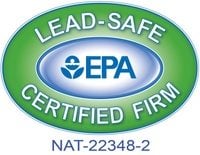
Process for Full Sanding of Wood Siding
When sanding lead-based paint off cedar shake or cedar plank siding, we tape and seal all the windows, doors and vents with plastic. Monk’s painters cover the ground and mark off the area with caution tape. We remove the lead-based paint with HEPA-vac sanders, which contain about 80% of the dust. Lastly, we use blue tarps to help knock down the dust. The blue tarps are actually not required by the EPA Lead Renovation, Repair and Painting Program, but are very helpful in controlling how clean the job site is.
Days One and Two
Prep work and full sanding is completed. Plastic on all the windows and doors helps to keep the dust out of the house.
Day 3
After the sanding, we use the HEPA vac to vacuum up any remaining chips or dust around the house. Then the painters power wash the house to remove any dust on the shingles or planks. At this point, we’ve cleaned the house and removed any traces of lead dust.
Days 4 through 7
After the house is clean and the lead dust is removed, we then
- Make any necessary carpentry repairs like replacing rotted shingles or trim pieces,
- prime the house with an oil based primer,
- fill any nail holes,
- caulk the seams and corners and then
- apply two top coats of paint.
On this particular house, we used Duration Paint from Sherwin-Williams and then left the extra gallons in the basement for the homeowner. We prefer a satin finish on the siding to help prevent mildew and to allow for easier cleaning in the future.
Day 7
The house is finished and the yard is clean and free from paint chips.
The number of days it takes to complete your exterior painting project will vary. Some factors include the area that needs to be sanded, the number of carpentry repairs required, if we are painting shutters, and of course, the weather. Your Estimator will provide you with an anticipated project length after visiting your home and understanding what is required.

